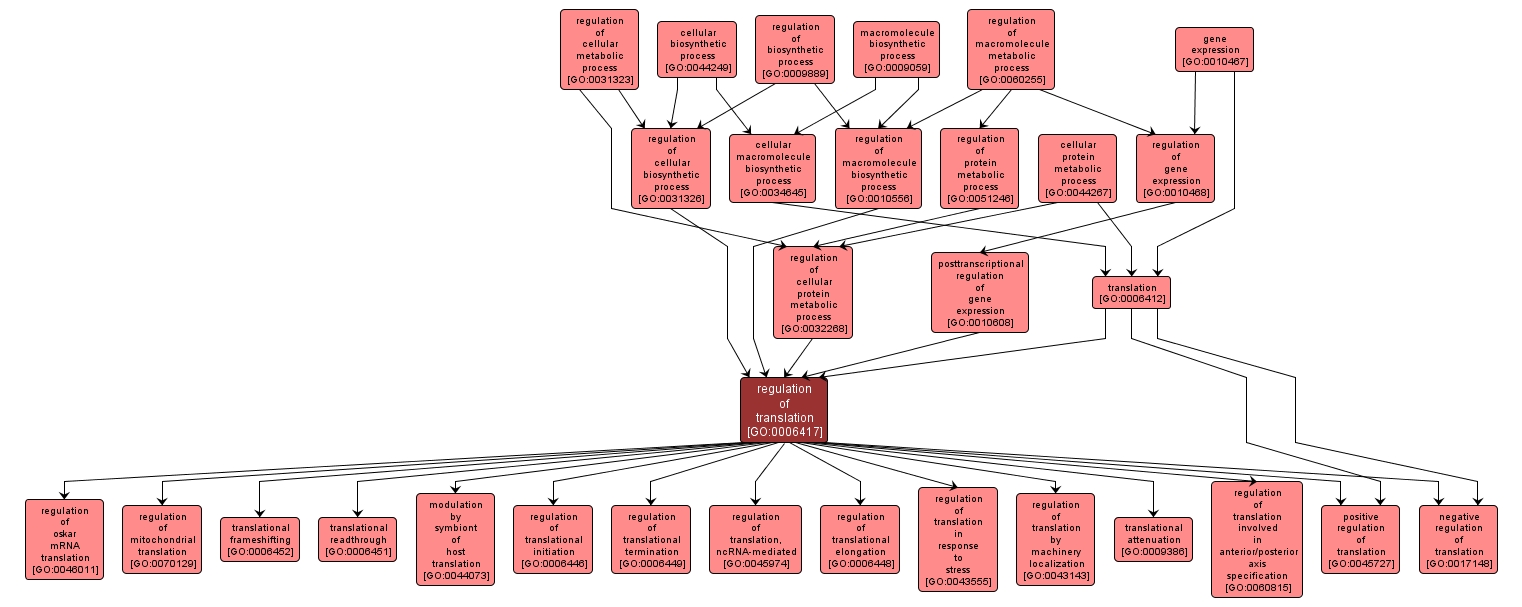GO TERM SUMMARY
|
| Name: |
regulation of translation |
| Acc: |
GO:0006417 |
| Aspect: |
Biological Process |
| Desc: |
Any process that modulates the frequency, rate or extent of the chemical reactions and pathways resulting in the formation of proteins by the translation of mRNA. |
Synonyms:
- regulation of protein anabolism
- regulation of protein biosynthesis
- regulation of protein formation
- regulation of protein synthesis
- GO:0006445
|
|

|
INTERACTIVE GO GRAPH
|














